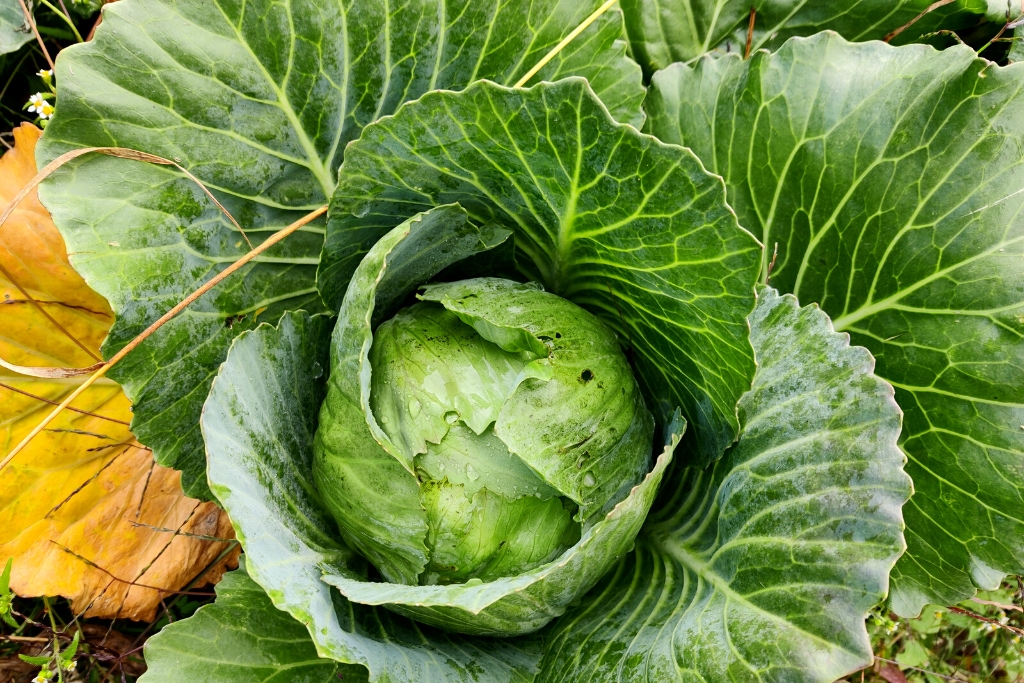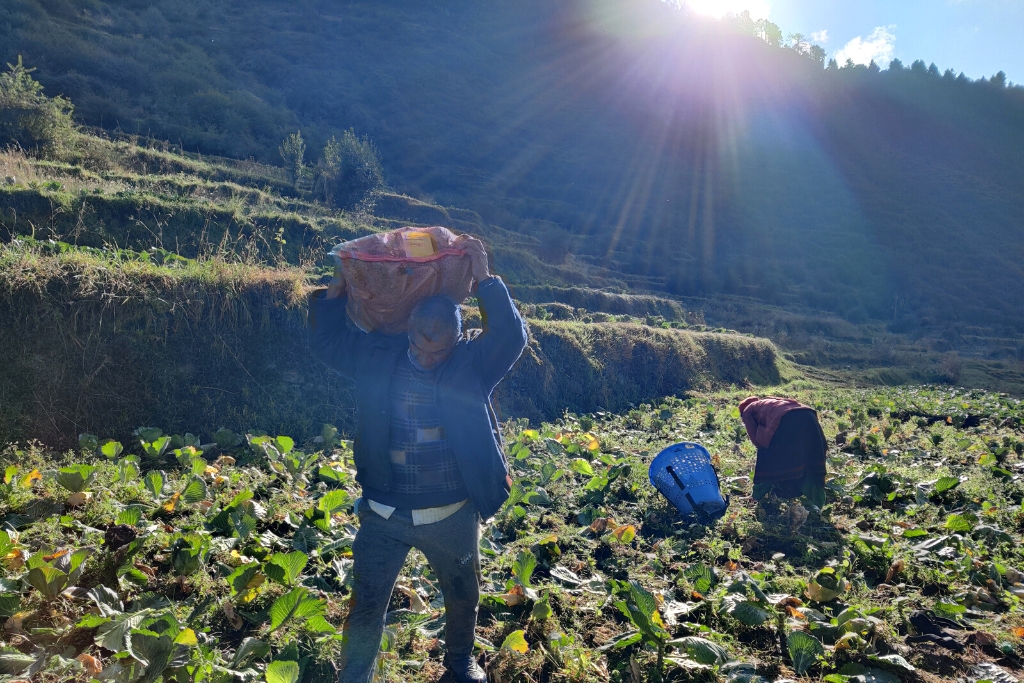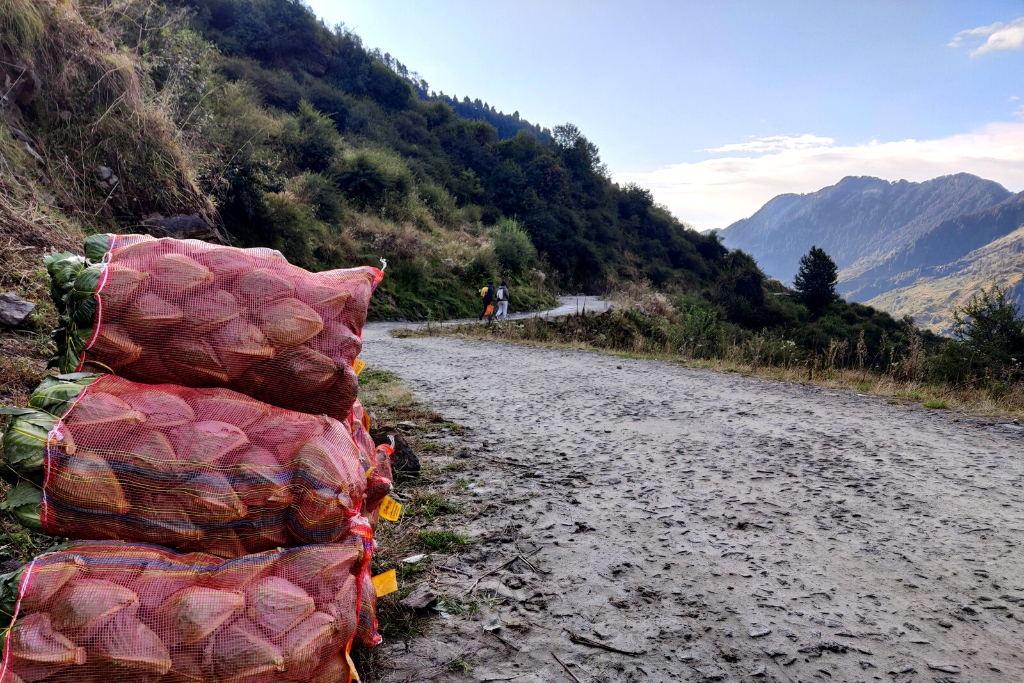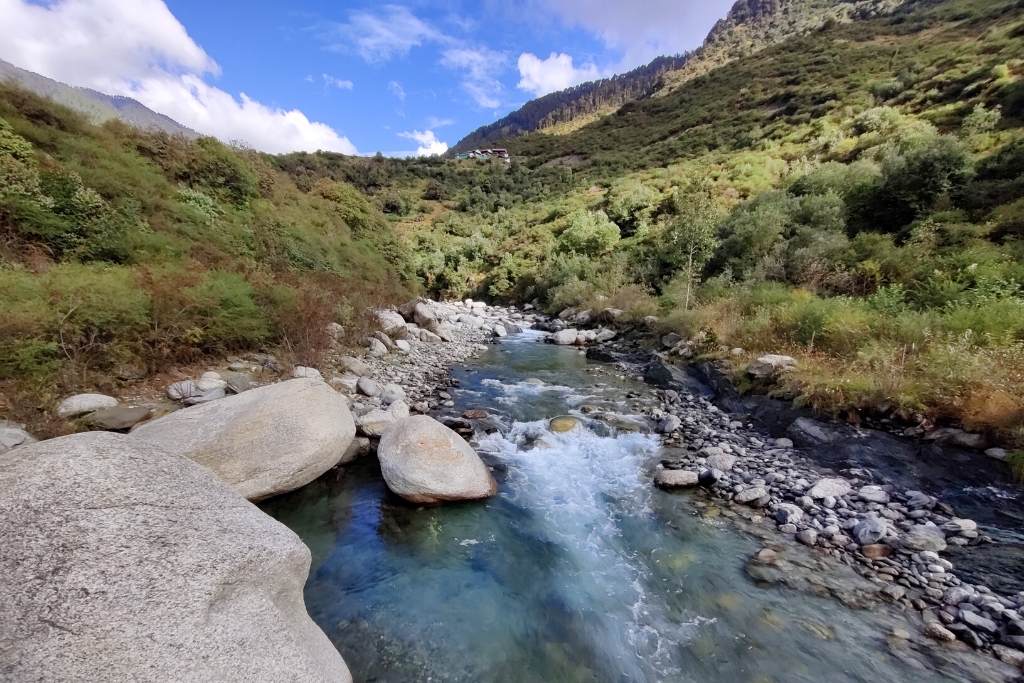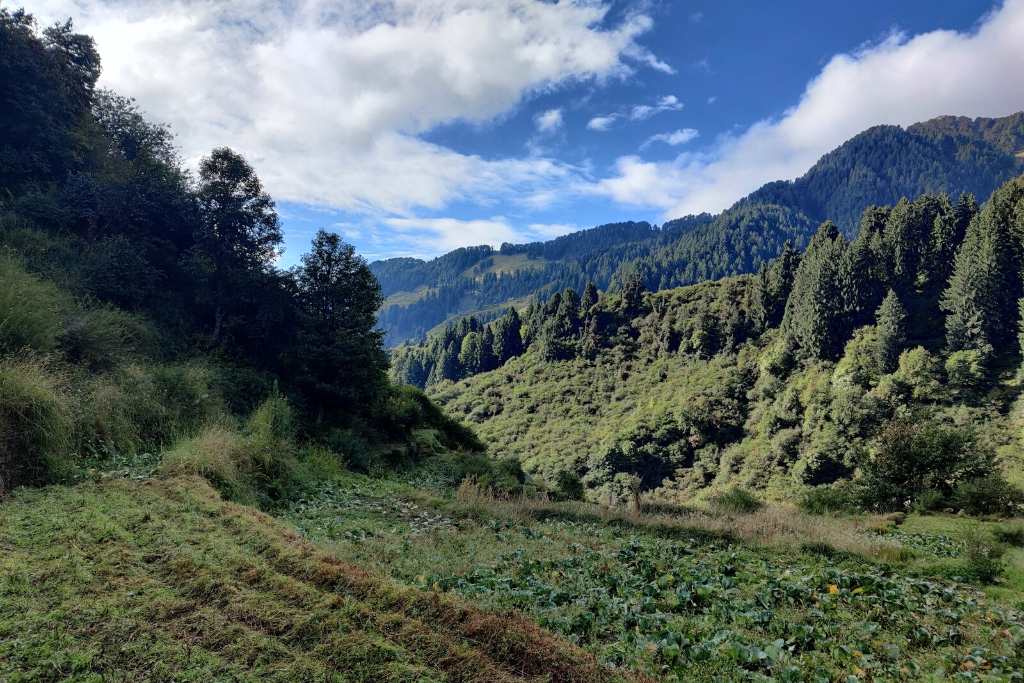
This is where your cabbage may be coming from
Bara Garan is a remote sleepy hamlet nestled at a height of 2,350m in the Dhauladhar range of the Himalayas. Located in the Kangra district of Himachal Pradesh, Bara Garan had no road connectivity to a nearby town until a couple of decades back. Residents had to walk for a day to reach Barot, the nearest town. But things changed when a road was constructed. Now villagers who earlier grew crops only for self-sustenance are farming cabbage commercially, selling it to traders across north India.
Farmers in Bara Garan grow cabbage on hilly terraced fields. Sown in April and harvested by September-October, cabbage is easier to grow for them because of less chances of crop damage. (Photo by Novita Singh)
Also Read | Overproduction leads to distress sale of cauliflower in Bengal
Villagers recall that after a road was built in the area, a local man named Fauji Ram returned from Manali with cabbage seeds one day. People called him crazy since they thought it was impossible to grow the vegetable at such height. But as Ram’s experiment with the seeds proved successful, others began farming cabbage too. (Photo by Novita Singh)
Also Read | Mountain farmers adapt to life beyond apples
Drumpati and her husband Babulal grow cabbage on their 8-10 kanal (about 1 acre) of land. The couple said they harvest 2-3 quintals in a day. “We sell on an everyday basis. A tempo from the village comes here. They weigh the produce, collect it and take it to the mandi,” Drumpati said. The harvesting season goes on for 10 days and the family gets their share of the money at the end of it. “We don’t calculate or check the amount,” she added. (Photo by Novita Singh)
Also Read | Saran women banish poverty by cultivating vegetables
Most families make Rs 50,000-60,000 for their entire produce every season. “It is not enough. I have to pick up additional work such as manual labour at construction sites,” Drumpati said. “But it helps us see the winters through, which are very tough,” she added. (Photo by Novita Singh)
Farmers leave their sacks on the roadside for weighing. A select group of farmers from the village collect and take everyone’s produce to the nearby mandi at Multhan where private traders from Delhi, Punjab, Jammu and Kashmir and Himachal Pradesh come to purchase it. (Photo by Novita Singh)
Families work together to harvest the crop. They say that until a few years back, cabbage was farmed organically. The trend of using fertilisers and pesticides started by emulating each other. Shivam, a 17-year-old student of Baijnath University, is on a visit here to help his family with the harvest. He said he does not want to become a farmer when he grows up. (Photo by Novita Singh)
For irrigation, the farmers are dependent on natural sources like rain or local water bodies like the river Uhl, a tributary of Beas, that flows through the area. Farmer Shivjeet Singh said that during the sowing month in April, the family has to fill buckets of water from the Uhl River and lug it to the field repeatedly to water it. (Photo by Novita Singh)
Villagers say that this new source of income has definitely brought them comfort. “It was extremely tough earlier,” Shivjeet said. But he quickly added, “However, we now have to buy wheat. The trend of growing our food has taken a hit.” (Photo by Novita Singh)
Kangra contributes one-fourth of the total food grain produced in Himachal Pradesh. The economy of the district is primarily agrarian, with 66.06 percent of the working population directly dependent on agriculture. (Photo by Novita Singh)
The lead image shows terraced fields of cabbage in Bara Garan, Himachal Pradesh. (Photo by Novita Singh)
Novita Singh is the Associate Video Director at Village Square and an independent filmmaker.

